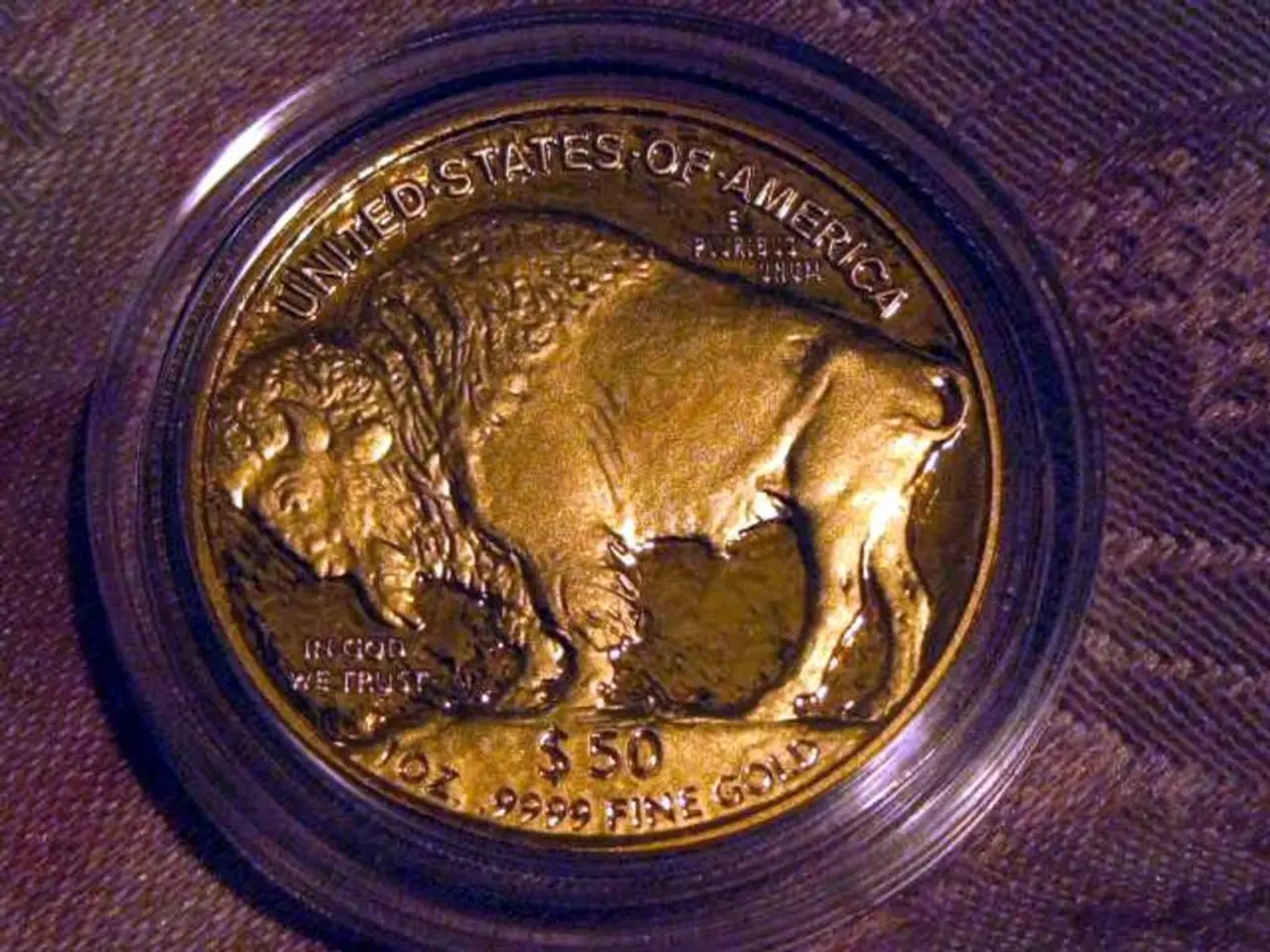Gold inflow into Exchange-Traded Funds (ETFs) persisted in July, according to the World Gold Council's latest report.
================================================================================
In a significant development for the global investment landscape, gold-backed exchange-traded funds (ETFs) reported a surge in inflows during July 2023. According to the World Gold Council, the total inflows for the month were 23 tonnes, pushing assets under management (AUMs) to new record peaks of $386.4 billion.
The increase was primarily driven by strong inflows into Western ETFs, with North America and Europe contributing the most to global inflows during that month. In North America, funds added 13 tonnes of gold, nudging total holdings to 1,870 tonnes, while in Europe, inflows were valued at $1.8 billion, pushing AUMs to $146.1 billion.
Positive investment sentiment in Western markets played a significant role in this resurgence. North America and Europe saw notable inflows that anchored the global growth in ETF holdings, reversing prior outflows seen in early 2024. North American-listed ETFs, in particular, led gains across the first half of 2023, pulling in substantial volumes equating to billions of US dollars.
Another key factor was the rising gold prices and robust market activity. The gold price strengthened, reaching new records during mid-2023, driven partly by greater demand for safe-haven assets. This was accompanied by elevated trading volumes in gold markets, including COMEX futures, where futures investors increased net long positions, reflecting bullish investor positioning.
Broader geopolitical uncertainties, inflation concerns, and monetary policies often stimulate demand for gold-backed assets as hedges, thereby driving ETF inflows in these regions. While not explicitly detailed for July 2023, historical patterns and the global context at the time support this interpretation.
This surge in inflows also marked the strongest semi-annual global gold ETF performance since 2020, indicating a sustained recovery and growing investor confidence in gold ETFs anchored by Western demand.
The rise in gold-backed ETFs was not limited to North America and Europe. Asia also reported inflows, with ETFs in Asia recording a one-tonne inflow and AUMs in Asia rising by $93 million to $34.6 billion. India and Japan saw holdings rise by one tonne and two tonnes respectively. However, China saw outflows amid local investors' improving risk appetite.
In conclusion, the July 2023 rise in gold-backed ETFs was largely driven by renewed investor interest in Western ETFs, anchored by strengthening gold prices, increased trading volumes, and underlying economic and geopolitical factors encouraging safe-haven allocations. This resurgence in gold ETFs, particularly in North America and Europe, is likely to continue as long as these factors remain favourable.
[1] World Gold Council, (2023). Gold Demand Trends Q2 2023. [2] Kitco News, (2023). Gold ETFs See Strongest Semi-Annual Inflows Since 2020. [3] CME Group, (2023). COMEX Gold Futures Trading Volume and Net Long Positions. [4] Bloomberg, (2023). Gold Prices Reach New Records in Mid-2023. [5] Financial Times, (2023). Gold ETFs Benefit from Safe-Haven Allocations Amid Geopolitical Uncertainties.
- In the realm of finance, the increase in gold-backed ETFs was not only observed in North America and Europe, but also extended to the Asian market, with the World Gold Council reporting a one-tonne inflow and AUMs in Asia rising by $93 million.
- Despite China's local investors showing improving risk appetite, resulting in outflows from Chinese ETFs, the surge in gold-backed ETFs throughout July 2023 was predominantly influenced by trends in Western finance markets, as investor interest in gold ETFs rose dramatically, particularly in North America and Europe.




